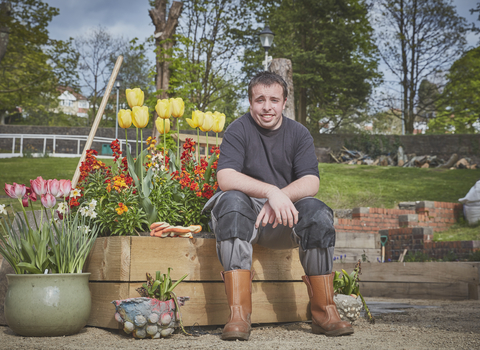Managing conflict in a community group
Image copyright Autumn Barlow / The Wildlife Trusts
Conflict is normal
You can't avoid it, but you can manage it. This guide expplains how you can spot conflict before it gets too heated, how to deal with it when it arises and what you can do to reconcile people.
Managing conflict in a community group (https://www.youtube.com/watch?v=I3BzOsBYEqI)
Kei from Lincolnshire talks about how to manage disagreement in a group.
What causes conflict?
- Misunderstandings
- Bad communication
- Bad planning
- Frustration and stress
- Feelings of a lack of power
- Diverse opinions about the best way to do something
- Changes in the way things are done, meaning people feel unsettled
How do you know there’s conflict on the way?
It isn’t always easy to spot it before it all blows up!
Sometimes, people talk about problems outside of the group or organisation. It might be helpful to set regular “check-in” times where everyone is encouraged to speak freely about anything that is on their minds.
Does anyone seem unhappy or have they lost enthusiasm, energy or focus? Speak to them quietly and privately. Perhaps there is something on their minds. This can stop their worries blowing up in a big argument with someone else.
Can people submit their concerns to you privately or anonymously? Is there a box that people can drop notes into, perhaps?
What to do about it
Don’t ignore it! Deal with it as soon as you can.
Listen.
If things have blown up, get someone to help who has not been involved – a neutral third party. They can act as a “facilitator”.
The facilitator needs to listen to all sides of the argument.
Using non-judgemental language, the facilitator writes or draws out what led to the conflict.
The facilitator listens to, and lists, the needs and concerns of each person involved. It is often best to do this in “rounds” where each person gets a set amount of time to speak, and cannot be interrupted while they are speaking.
By talking about these concerns, they can be dealt with. People will see that everyone has needs and often they are the same.
Often, people will bring up other issues not related to the main conflict. Write these down, and add them to a separate board – the “parking bay” – so that they can be addressed later. Make sure that you do go back to them!
The facilitator asks the group to brainstorm possible solutions. Not all of the solutions will make everyone happy. This can take a lot of time, so be patient. Take breaks and don’t expect to get everything sorted in one session. Sometimes people need some time to calm down.
When a potential solution is reached, make sure everyone is happy with it, then agree to try it out. Be sure to say that it’s a trial period to see if it works. Make sure you’re ready to listen to everyone and hear their experiences. Set a date to review the problem, and be willing to admit if things have not improved. You might need to go through this process again.
Resolving conflict is not about winning the argument
You must make it clear to everyone that this is not about winning or losing. Allow people time to calm down.
Establish some ground rules before you begin to discuss the issue, and if you are the facilitator, make sure you model neutral language and show people how to behave.
Don’t challenge people or make them feel uncomfortable. They will react unpredictably. Choose a neutral area to discuss the issue if you can.
Don’t face straight on to people, and if you are encouraging two people to discuss their problems, ask them to sit next to one another or at an angle. Often, people will find it easier to discuss their issues when they are walking together or sitting next to one another in a car.
Give people a chance to save face. Don’t insist on apologies, or for people to “own up”. Ask people to use “I” in their sentences and explain how they feel. For example, “I feel so left out of the conversation when I come in and find that Fred and Bill have already decided where the bird boxes are going to go. I want to be part of the decision.”
A good framework is to say, “I feel [insert your feeling] when you [do the problematic behaviour] because [what it actually does to you]. I would like [offer a solution to consider.]
Use active listening skills. This means reflecting what you’ve heard back to the person who is speaking. For example:
“I hate how this whole project is going. When we started, we had plans to transform the whole town centre. Now all we’re doing is shoving some stupid tulip bulbs in a pot outside Boots.”
“You sound really frustrated with it all. It hasn’t met your expectations, is that right?”
Avoid labelling anyone’s opinions or comments as “wrong” and discourage anyone who does so.
Further help
A useful and simple guide with more tips is here on this academic website.
This website from New Zealand is an excellent guide with tips on what to do if someone is hostile directly at you.

The Wildlife Trusts
Have you been part of a community nature project?
We'd love to hear from you! Your experiences will be shared right here on the Community Hub and will inspire others to take action in their own neighbourhoods.


CC by 4.0 attribution
Except where noted and excluding images, company and organisation logos, this work is shared under a Creative Commons Attribution 4.0 (CC BY 4.0) Licence.
Please attribute as: “Nextdoor Nature (2022-2024) by The Wildlife Trusts funded by The National Lottery Heritage Fund, licensed under CC BY 40”




